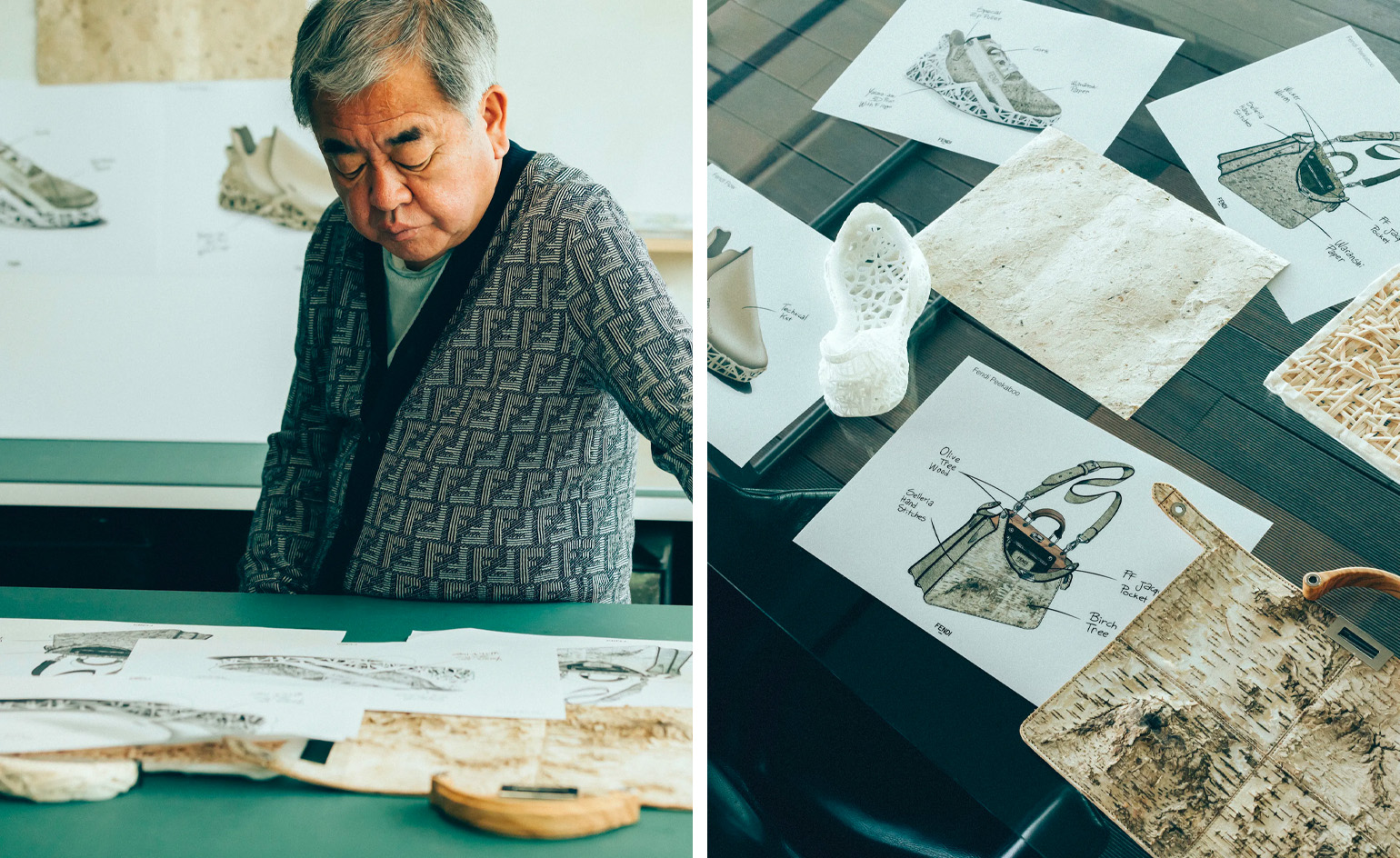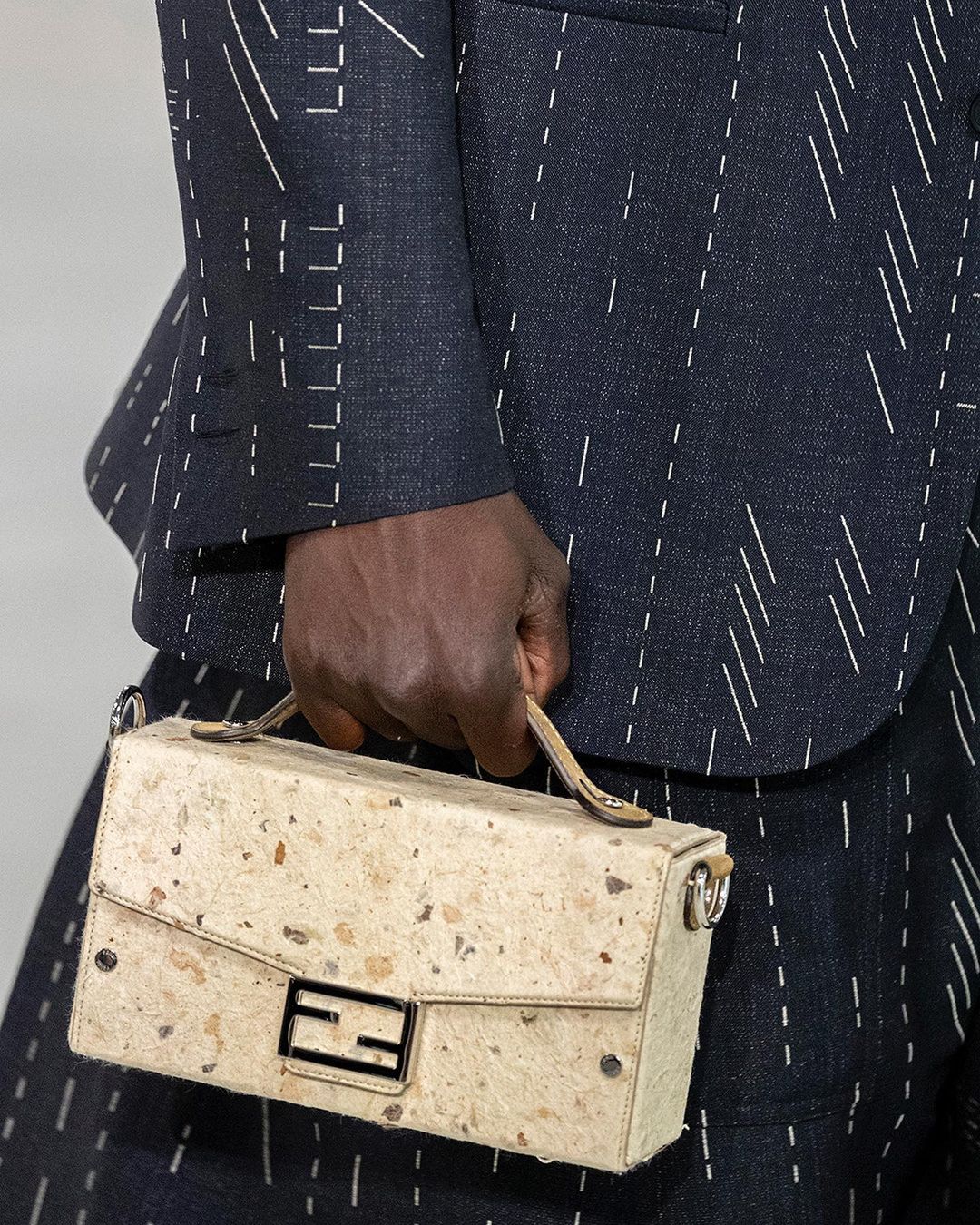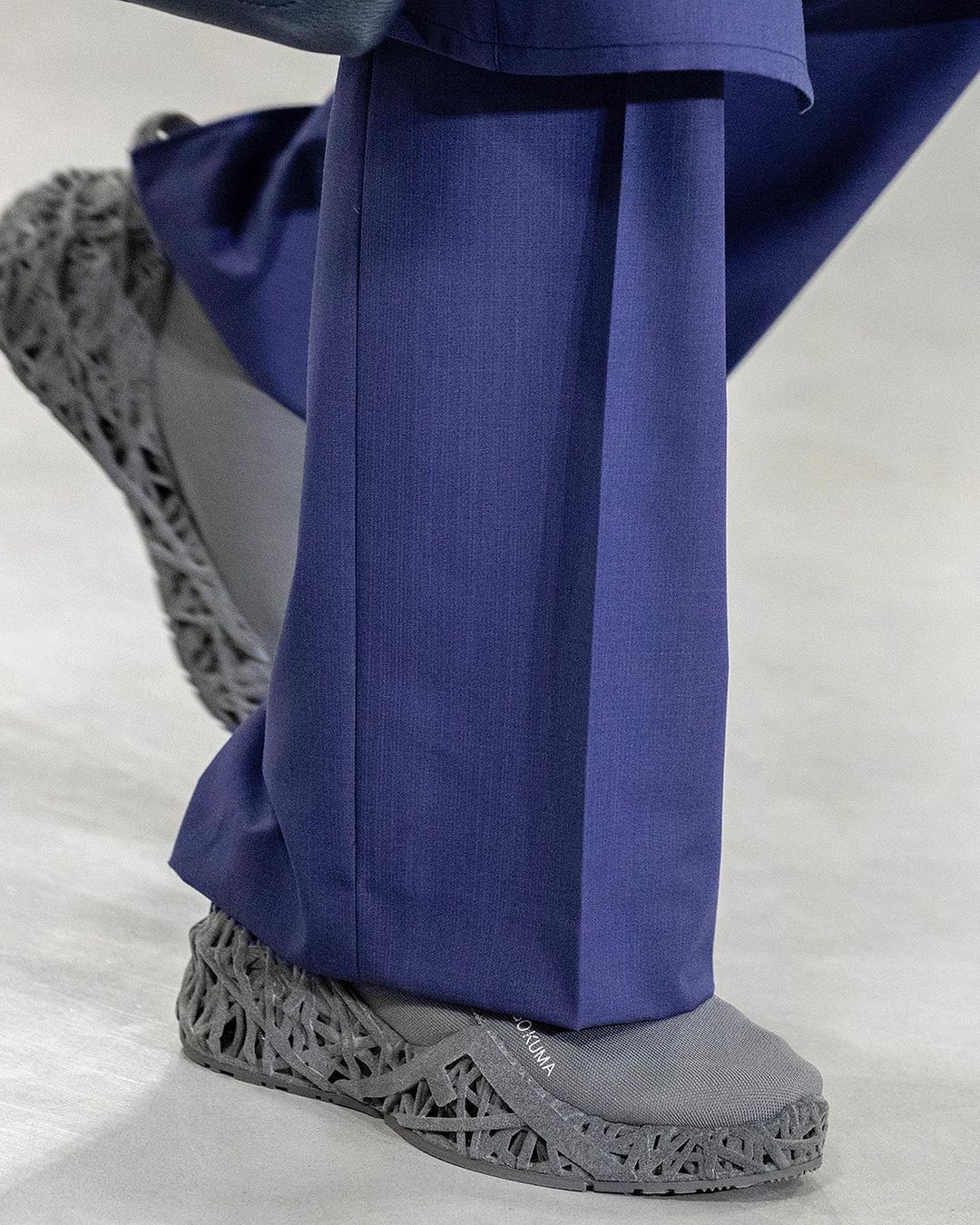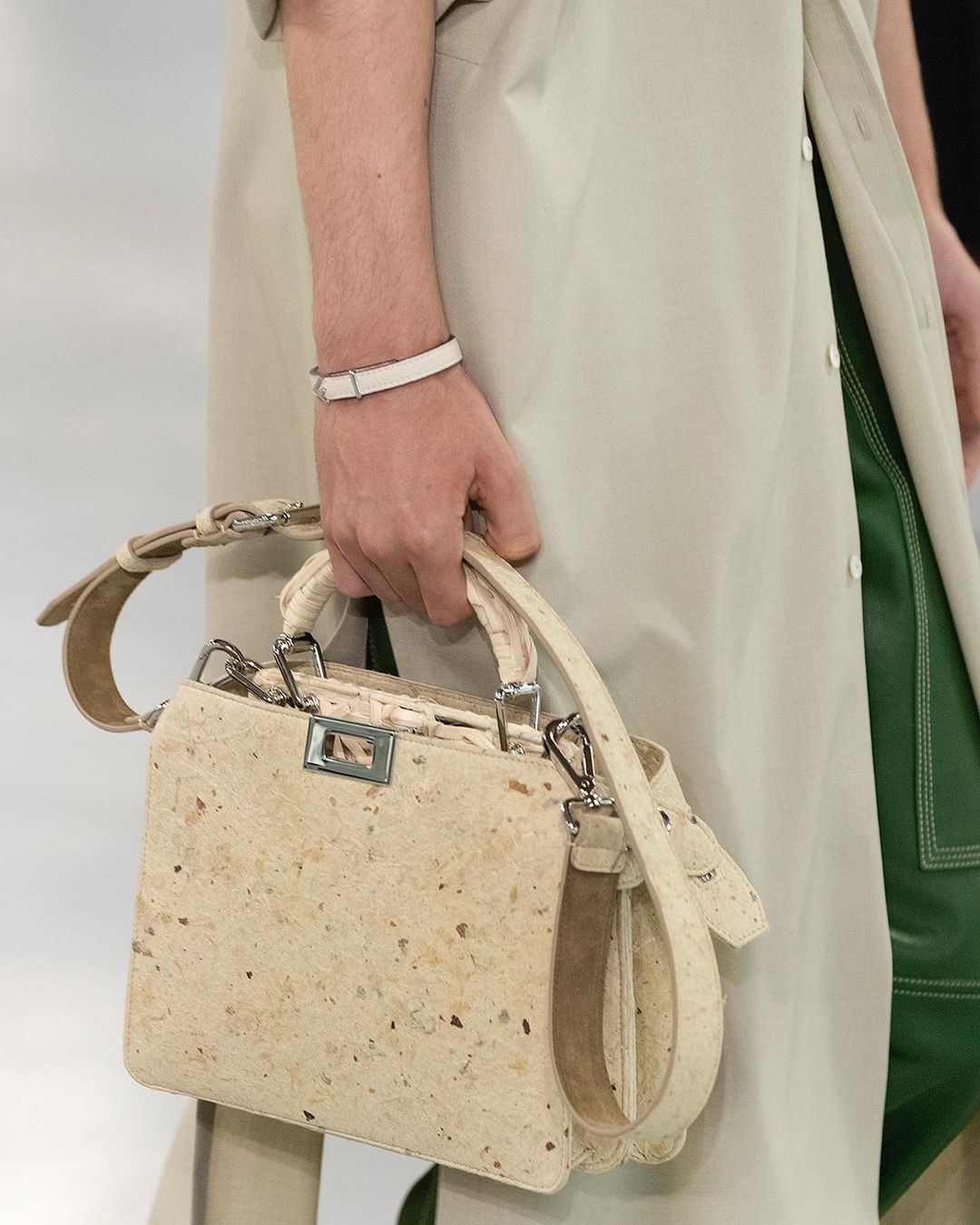
As menswear month comes to a close, it is a chance to zoom into the finer details of the collections: like Fendi’s recent collaboration with pioneering Japanese architect Kengo Kuma, first presented as part of the house’s S/S 2024 men’s collection earlier this month.
The show itself took place as part of Pitti Uomo 104, the latest edition of the Florentine menswear fair, which takes place each January and June. Attendees were transported to the recently inaugurated Fendi Factory, just outside the city in the Tuscan countryside, for a show that was an ode to craft and the atelier that creates the house’s handbags and leather goods in the location (the artisans continued to work, as the show’s backdrop, before joining accessories and menswear creative director Silvia Venturini Fendi for her bow).
Fendi unites with Kengo Kuma on new accessories

Craft was also central to the collaboration with Kuma, who created versions of Fendi’s ‘Peekaboo’ bag, ‘Baguette Soft Trunk’ and ‘Flow’ sneakers. The various pieces reflect Kuma’s deep-rooted relationship with Japanese tradition and use of natural materials, a philosophy that has informed much of his work.
Here, the various accessories were made using materials that include ‘waranshi’, a version of Japanese washi paper made from cotton and tree-bark fibres that is traditionally used for origami and lantern making. Here, it lends the bags a natural, gently speckled effect, evocative of handmade paper. Another fabric is made using the practice of ‘yatara ami’ weaving, using bamboo strands for a woven lattice-like effect. The sneakers include an architectural sole designed for the project by Kuma.

‘I've always thought of Kengo Kuma as a master of naturalist architecture. He was one of the first to understand the importance of building nature into architecture both inside and out,’ explains Silvia Venturini Fendi of uniting with Kuma on the project, which is titled ’Fendi Kengo Kuma’. Fendi calls it a ‘new artistic dialogue between Italy and Japan’, suggesting a possible further chapter.
‘I feel a sense of kinship with his Japanese approach to savoir-faire – I think it is a strong value shared between Japan and Italy,’ she continues.
‘Nature and craft have always been at the centre of my work as an architect and a designer,’ adds Kuma. ‘When Fendi asked me to reflect on their bags and shoes, I thought of them like small architectural projects on a human scale.’








